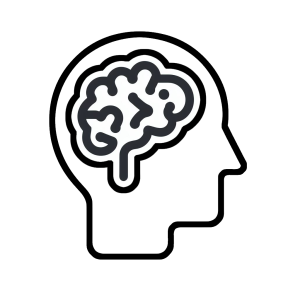Module 6: Inclusive Teaching
Introduction
High-stakes testing and greater attention to increased student and teacher accountability only help reinforce the importance of providing students with disabilities full access to the general education curriculum.
Inclusive teaching allows teachers to engage all learners in learning regardless of their background or ability. Inclusive teaching also helps students who have disabilities but have either declined services or haven’t yet been identified for services still benefit from instruction in the general education classroom without an Individualized Education Program (IEP).
In action, inclusive teaching looks like a comprehensive instructional approach that considers students’ needs and varying abilities in the classroom. Inclusive teaching approaches ensure all students access to the general education curriculum and the opportunity to progress, as required by Public Law (PL) 108-446 (Congress.gov). Using the Universal Design for Learning (UDL) structure in combination with Differentiated Instruction (DI) helps offer all students, including those with undocumented disabilities, the maximum opportunity to meet and or exceed learning outcomes.
This module will explore Universal Design for Learning and Differentiated Instruction. A proactive approach to designing accessible learning experiences for all students, Universal Design for Learning (UDL) emphasizes flexibility and adaptability in the curriculum. UDL aims to maximize learners’ potential by considering diverse needs and abilities from the outset.
Differentiated Instruction evaluates individual students’ needs and readiness levels and modifies the learning to fit student needs. In differentiated classrooms, teachers tailor instruction to address varying learning styles, interests, and levels of complexity, ensuring growth for all learners. Unlike UDL, which aims to design universal learning experiences from the outset, Differentiated Instruction is considered a more reactionary approach.
These instructional approaches can help you as a future teacher to develop and execute lessons that allow students with individual differences and diverse cultures to thrive. Inclusive teaching can enable teachers to engage all learners in learning regardless of their background or ability. This module contains two chapters: The first chapter focuses on UDL, including strategies teachers can use to promote learning in their classrooms, and the second chapter focuses on Differentiated Instruction and the importance of meeting students where they are academically.
 Preparing to Learn
Preparing to Learn
Comparing Universal Design for Learning and Differentiated Instruction
This module presents two ways teachers can create effective learning experiences for students regardless of whether they receive special education services: Universal Design for Learning (UDL) and Differentiated Instruction. This video explains the difference between these approaches and the ways they can complement each other.
References
108th Congress. (n.d.). H.R.1350 – 108th Congress (2003-2004): Individuals with Disabilities Education Improvement Act of 2004. Congress.gov.
Identify relevant pedagogy to maximize student learning.
Disposition. The teacher respects learners’ differing strengths and needs and is committed to using this information to further each learner’s development.
Knowledge. The teacher understands and identifies differences in approaches to learning and performance and knows how to design instruction that uses each learner’s strengths to promote growth.
Knowledge. The teacher understands the relationship between motivation and engagement and knows how to design learning experiences using strategies that build learner self-direction and ownership of learning.
Disposition. The teacher believes that plans must always be open to adjustment and revision based on learner needs and changing circumstances.
Knowledge. The teacher knows when and how to use appropriate strategies to differentiate instruction and engage all learners in complex thinking and meaningful tasks.
focuses on planning instruction in such a way to meet the varied needs of students at the point of first best instruction, thereby reducing the amount of follow-up and alternative instruction necessary
